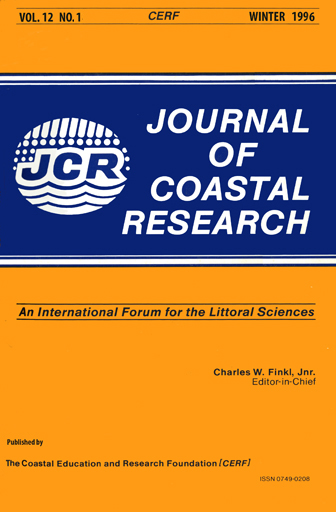Rates and Patterns of Migration of Shoreface-Connected Sandy Ridges along the Southern North Sea Coast
Keywords:
Shoreface-connected ridge, North Sea, migration rates, storm surgeAbstract
Geological studies of shoreface ridges along the southern North Sea coast are still at a rudimentary stage but are being intensified. This is largely because of the growing awareness of the potential impact of the dynamics of the ridges on nearshore projects. This preliminary report mainly focuses on the rates and patterns of migration of these ridges. It is observed that (1) headward (coastwise) ridge trough elongation occurs at a rate ranging from 80-500 m/y; (2) in addition to the latter pattern, ridges may migrate either diabathically, or exclusively shoreward or seaward at a maximum rate of 100-200 m/y, with the shoreward component being more significant; (3) no definite time-progressive variation in cross-shore migration pattern is evident; (4) compared with the deeper water ridges, those proximal to the coastline more frequently migrate seaward, which is suggestive of a response to the stronger impact of the recurring ebb storm-surge flow; and (5) on the whole, no significant coastwise differences in cross-shore rates of ridge translation were evident. The above-documented ridge migration rates represent the highest recorded anywhere in the world to date. Detailed flow measurements, made exclusively during fairweather conditions over the ridge morphology, lead to the conclusion that ridge migration is largely storm induced. Future studies in the region should aim at characterizing the storm flow-field.


